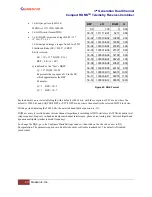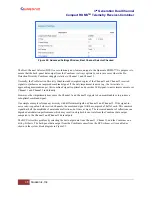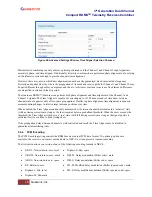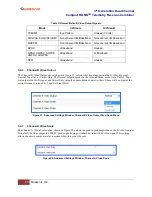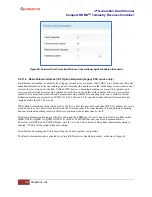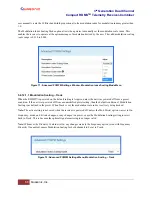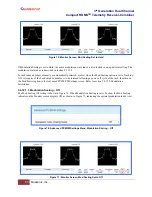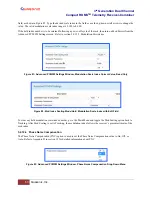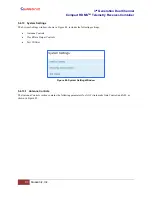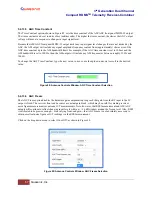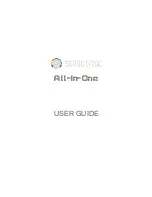
3
rd
Generation Dual Channel
Compact RDMS
TM
Telemetry Receiver-Combiner
53
Quasonix, Inc.
LDPC decoding is only available for SOQPSK-TG and STC modulations. When in SOQPSK/LDPC or STC/LDPC
mode, the appropriate code (k, r) must be selected for proper operation. Also, in these modes only, the user may
select between no derandomization, standard IRIG derandomization as specified in IRIG 106-17 Annex A-2, or
CCSDS derandomization as specified in IRIG 106-17 Appendix 2-D. Again, the derandomization selection must
match the encoding selected at the transmitting end for proper operation.
SOQPSK/LDPC uses trellis demodulation. Trellis bit error rate performance in pure additive noise is slightly better
than single-symbol bit error rate performance, as shown in IRIG 106-17, Figures D-10 and D-11. Trellis
synchronization under adverse conditions may be significantly faster than single-symbol synchronization.
LDPC encoding is intended to improve performance specifically under harsh conditions, which might have a
negative effect on AFC tracking. In general, Quasonix recommends setting the AFC Mode to Off if possible. This
recommendation is especially important for the best LDPC performance. Refer to section 5.4.3.5 for more
information about AFC Mode.
Available LDPC Mode options are:
k = 4096, r = 1/2
k = 1024, r = 1/2
k = 4096, r 2/3
k = 1024, r = 2/3
k = 4096, r = 4/5
k = 1024, r = 4/5
LDPC Code always displays in the Forward Error Correction window (Figure 63) when the waveform Mode is
SOQPSKLDPC or STCLDPC.
Figure 63: Forward Error Correction Window, when in SOQPSKLDPC or SOQPSKSTC Mode
Select the desired encoding format from the drop down menu, as shown in Figure 64.
Figure 64: Forward Error Correction Window, LDPC Mode Drop Down Menu


